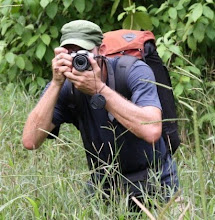The drag about the city was that it was incredibly touristy and around every corner there was someone who wanted to shine your shoes, sell you some cheesy alpaca product, or give you a massage. In one day I had over twenty people ask if I wanted a massage, a little annoying since I was only there to see the city get to know the culture, which I suspected had little to do with massages. Cuzco was not only a beautiful colonial city full of history but it was also the most logical place to begin a trip to Machu Picchu, easily the most famous archaeological sight in the Americas and recently voted as one of the seven great wonders of the world. With tourists from all over the world converging on Cuzco the tourism industry was sadly the only industry in Cuzco. When I was there it was the middle of the slow season with the world also in the midst of a global economic crisis that most likely prevented some would be tourists to make the trip. Considering both situations it was particularly hard for for most "cuzquenos" that were so dependent upon tourism. It was sad, but also a bit frustrating. With all of the moneyed tourists that make it to Cuzco many locals have honed their whining and begging skills to guilt tourists into giving them something. In more than nine months of travel in Latin America I have seen plenty of people in poverty who held their heads higher. Not because they were greatly different but rather because they didn't have a steady influx of comparatively rich gringos to support them.
















Around Cuzco there are plenty of archaeological sights. One of the most impressive was Saqsaywaman which was built in the shape of a puma's head looking down from above. Actually all of Cuzco was built in the shape of a puma and Saqsaywaman was the head. Saqsaywaman was built in three layers with the largest stones placed at the bottom. The stones at the top being lighter were mostly scavenged by the Spanish for their own constructions. The meticulously carved stones at the bottom are estimated to weigh up to 120 tons so they were thankfully left in place. It is amazing to think of how the Incas transported, carved, and placed stones of that size so perfectly without any metal tools to carve or heavy machinery to move them.








I was in Cuzco a couple of times once before visiting Machu Picchu and then afterwards. On my way to Machu Picchu I met Edith a tour guide staying in Cuzco. She showed me around several of the archaeological sights in Cuzco including Saqsaywaman. On our walk back we came across across a fun parade or procession in honor of some patron saint. It was a fun sight to see.















Inca stone work




No comments:
Post a Comment